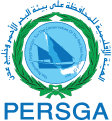This component is to support the GEF project with technical, administration, procurement, financial management, project monitoring and evaluation and environmental and social impact monitoring. This includes cost of training of PERSGA and at the local project management level in the administrative, environmental and social aspects mentioned. The project will be executed by PERSGA, and will comply with GEF IW and World Bank reporting requirements (e.g. providing a GEF-IW webpage consistent with IW:LEARN), provide IW Experience Notes, submit a GEF IW tracking tool at project start, provide for routine M&E processes, external Mid-Term and Terminal Evaluations, and project closure, provide lessons learned and other project information to IW-LEARN, and attend GEF IW Biennial Conferences.









